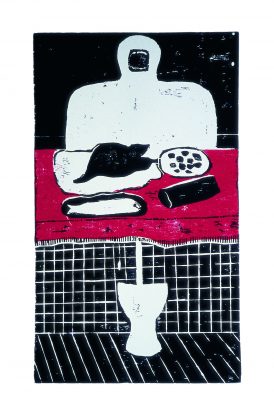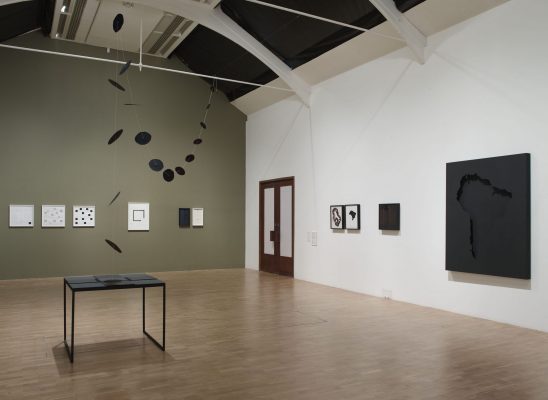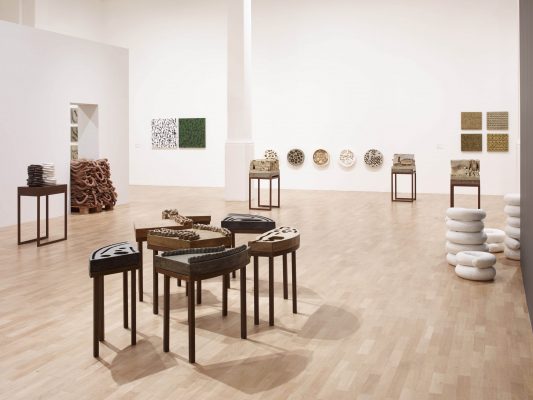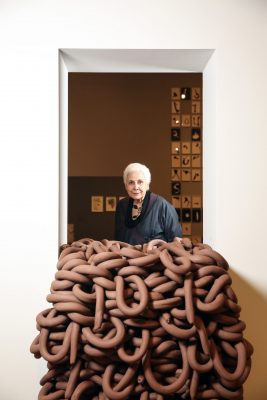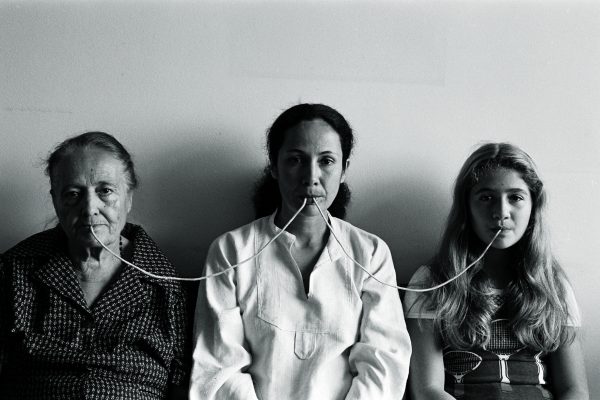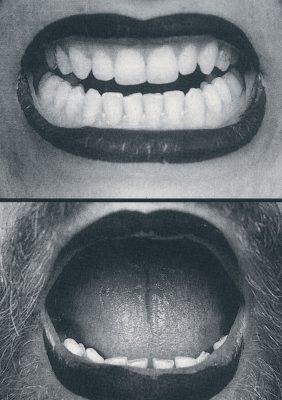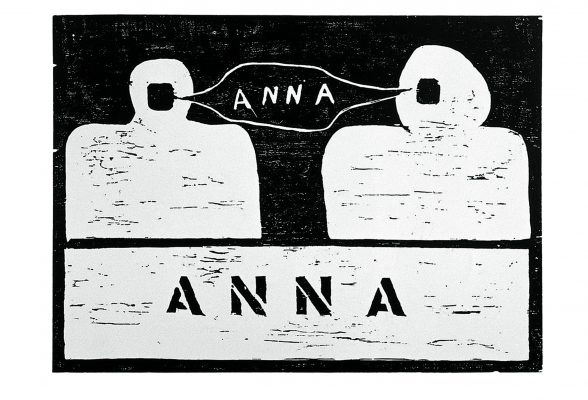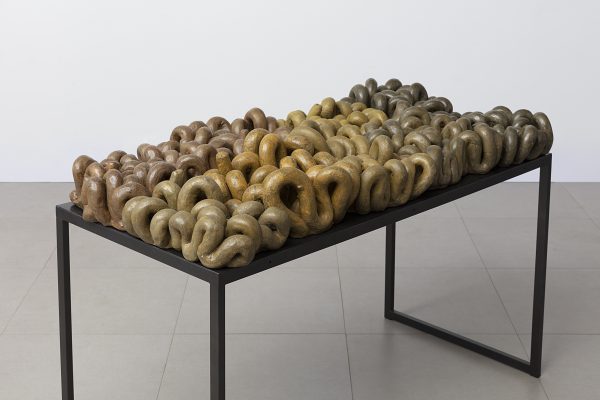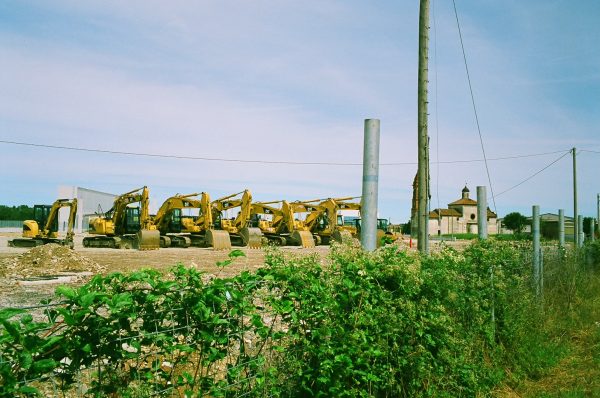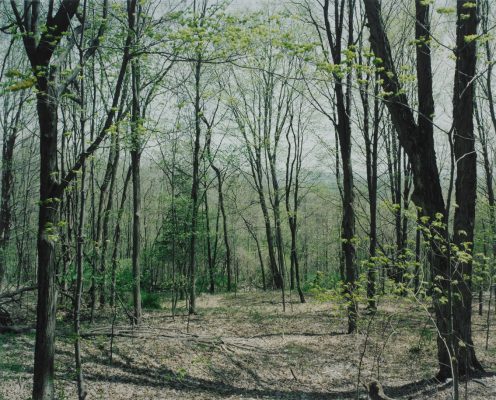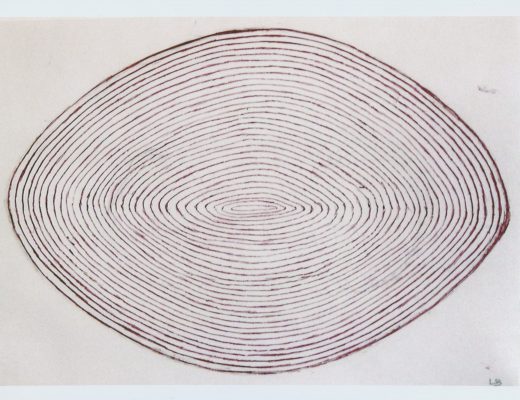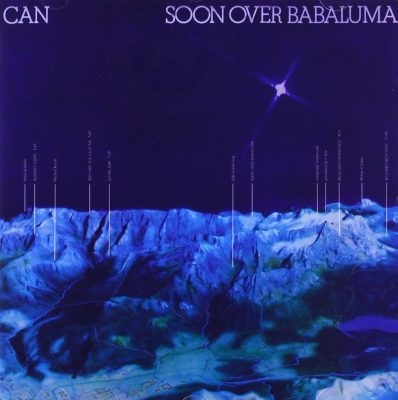In 1977, a group of mothers began to meet on Thursday afternoons in Plaza de Mayo, the site of the presidential palace in Buenos Aires, to protest the growing numbers of the ‘disappeared’: thousands of individuals who were being abducted and murdered by the military government in Argentina. Risking arrest or even death (three of the group’s original leaders were kidnapped and drowned), the women walked and chanted, carrying photographs of the missing children, with their names inscribed on their white headscarves, a symbolic reference to the white dove of peace. Their meetings continue to this day.
Making Love Revolutionary, the title of Anna Maria Maiolino’s survey exhibition at London’s Whitechapel Gallery — her first major exhibition in the UK, with over 150 works on show — is a reference to the non-violent demonstrations led by the ‘Mothers of Plaza de Mayo’, who she encountered while living between Argentina and Brazil in the 1980s. The phrase itself is taken from the final sentence of an unrealized installation project Maiolino began in 1991, in response to the mothers’ collective political challenge. The title is a recognition of their maternal love as a potent language in the discourse of resistance against violence. Throughout her practice, Maiolino turns to fragments, images, signs, and phrases drawn from her proximity to loaded histories — elements she endeavours to make cohesive through poetic contiguity rather than linear narratives.
Born in Southern Italy in 1942, Maiolino emigrated with her family to Venezuela aged 12, in order to escape the economic hardship and food shortages caused by WW2, before finally settling in Rio de Janeiro, Brazil in 1960, aged 18. Her experiences of cultural displacement and marginalisation are evident in her explorations of daily existence, domesticity, and bodily cycles. In one of the earliest works in the show, the graphic woodcut print Glu Glu Glu (1967), a figure is sat at a laden kitchen table, their mouth gaping open. The scene is paired with an image of a toilet, a doubling that functions as a diagram depicting the preparation, consumption, and expulsion of food, a physiological motif that Maiolino would later return to when working with clay.
The image of the mouth recurs throughout Maiolino’s work as a conduit for both sustenance and speech. Communication also provides a form of nourishment, for one’s sense of self. In another early woodcut, ANNA (1967), a cartoonish speech bubble hangs in the space between two amorphous bodies, as if it is a verbal morsel to be shared, ingested. “I found myself an immigrant, not speaking Portuguese and feeling like I was in quicksand – a feeling that has been with me my entire life since I left my homeland,” Maiolino has said of her early years in Rio de Janeiro, when she found herself learning a new language in a regime that violently curtailed free speech.1 Her displacement — this quicksand — must also be read within the historical context of the Brazilian military dictatorship (1964-1985), in which an environment of silence and harassment was endured.
Throughout the 1970s and 80s — like other artists seeking creative means in which to articulate political views — Maiolino began to experiment with video, photography, and installation. The Super-8 film In-Out Anthropophagy (1973) shows a cycle of gagging and releasing that echoes the frustrations of censorship, with male and female mouths opening and closing, occasionally taped shut, blowing smoke, regurgitating eggs, or spewing colourful pieces of string. In What Is Left Over (1974), a confrontational and masochistic photo-series, Maiolino uses her own body in order to speak to both the reality of torture and the subjugation of women, by threatening to cut off her nose, cut out her tongue, and gouge her eyes with pair of sewing scissors.
In the 1970s, Maiolino was also developing a new form which she called, ‘Fotopoemação,’ a neologism that describes an artwork that combines photography, a poem, and an action. One of these artworks, By a Thread (1976), shows her sitting between her mother and her daughter, with each of their mouths connected by rough pieces of string. The thread is a tangible manifestation of the matriarchal lineage. The women’s impassive expressions leave the narrative open to interpretation. Is this a bond of love, a chain, or both?
The Fotopoemação series continued into the next decade. In 1981, she staged the performance Between Lives on the street outside her studio on Rua Cardoso Junior, walking blindfolded among dozens of chicken eggs, an allusion to the everyday reality of ‘walking on eggshells’ in an authoritarian political landscape. The documentation from the performance is a black and white photographic triptych, in which we see her bare calves and soles of her feet navigating the cobbled pavement. She has described the use of the eggs as a metaphor for precariousness, referring to the work as a visual manifestation of living in a “minefield of … embryos, fragile lives”.2
In the late 1980s, Maiolino began working with clay, exploring the sensuality and potential of the material as a primordial and pre-verbal tool of expression. For the Whitechapel, she has made a new installation with unfired terracotta, which will crack and discolour over the show’s duration. Long sausage-like shapes snake together and are piled up against walls, while multiple rolled, kneaded, stretched, squeezed, and stacked pieces are laid out on a table in groups. Maiolino alludes to labour through her use of repetition: the energy expended, the visible evidence of the hand, implicated through the proliferation and accumulation of these magnificent, raw, slowly dehydrating forms. The visual associations of the clay sculptures range from loaves of bread to excrement. Like Glu Glu Glu, they link consumption and expulsion, bringing to mind Julia Kristeva’s thoughts on the ‘waste-body’ — an abject subject with “a mouth attributed to the anus.”3
Maiolino’s oeuvre, and her lyrical command of commonplace matter, can be viewed as the product of ingesting culture and politics and expelling it in the form of visual art. Given Brazil’s lurch to the far-right under the administration of Jair Bolsonaro, her affective studies of speech, censorship and social injustice continue to be pertinent today. “I once read a phrase by Liliana Segre” — an Italian senator and survivor of Auschwitz — “who urged us not to forget the horrors of the past because, once forgotten, they will be repeated. I would not want my children to find themselves living in a world full of violence and I want to believe that they have felt loved,” Maiolino has said. “To quote another phrase from Segre: ‘I resisted because I was loved’.”4
1 Maiolino, ‘Anna and I: Anna Maria Maiolino in Conversation with Diego Sileo,’ in Anna Maria Maiolino: Making Love Revolutionary, Whitechapel Gallery, 2019, p.146
2 ibid, p.150
3 Julia Kristeva, The Powers of Horror: An Essay on Abjection, Columbia University Press, 1982, p.109
4 ibid, p.156
